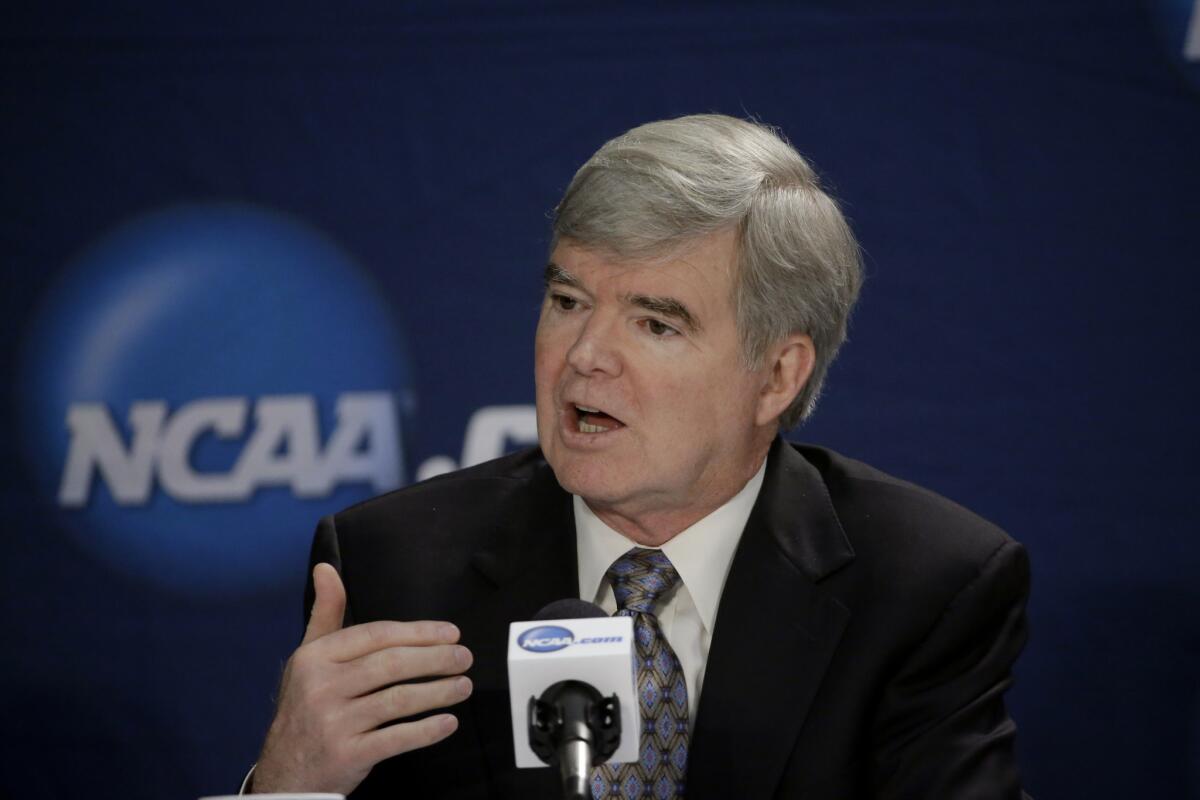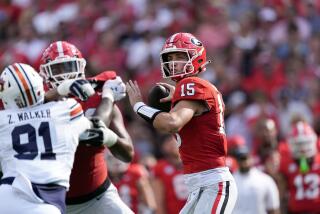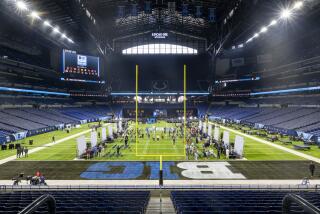NCAA President Mark Emmert: Latest rule change is food for thought

The NCAA president railed against the past Friday by uttering the contracted sentence many have been waiting to hear.
âThatâs absurd,â Mark Emmert said on ESPNâs âMike & Mikeâ Show.
The words didnât cover the gamut of inane NCAA practices but, hey, one absurdity at a time.
Emmert, the NCAAâs embattled leader, was only speaking to a ridiculous rule that defined when a bagel changed from a snack to a meal.
Thank goodness that issue has finally been resolved -- too bad it only took 23 years.
After deliberate consideration, a division of the NCAA ruled this week schools can now provide âstudent-athletesâ unlimited meals or snacks.
The rule is expected to be formally approved next week by school presidents.
Who said the NCAA canât move faster than a glacier?
Until now, NCAA rules stipulated you could feed a player between meals so long as it was only a snack.
Ah, but what constituted a snack? The NCAA defined a bagel being a snack, unless you put cream cheese on it. Then it became a meal.
Emmert told âMike & Mikeâ the rule change had nothing to do with Connecticut star Shabazz Napierâs recently saying heâd gone to bed âstarvingâ in the course of leading his team to the NCAA title.
Emmert said the rule has been working its way through the system for two years (wait, was it stuck in a vending machine?).
âThatâs just dumb coincidence,â Emmert said the timing.
Emmert added: âIf UConn wants to fee Shabazz [Napier] breakfast in bed every day, they can.â
Emmert jokes, but the rule change could lead to SEC schools hiring chefs like Emeril Lagasse to set up training tables.
The Iron Bowl outcome could now be determined by âIron Chefs.â
But thatâs a rule exploitation-argument for another day.
The fact it took two years to solve the âsnack vs. mealâ issue shows you just how dysfunctional the NCAA has been.
The food rule was actually enacted in 1991 under the regime of former NCAA President Dick Schultz.
The good news for all is the NCAA is now being forced to reform because it is being attacked on all sides and from within.
âWhatever it is today we made it that way,â Big 12 Commissioner Bob Bowlsby said of his governing body at the Final Four.
Huge increases in revenue have made the student vs. athlete issue tougher to reconcile. It was recently revealed Ohio State Athletic Director Gene Smith earned an $18,000 bonus because one of his wrestlers won the NCAA title.
Northwestern football players recently won a preliminary right to unionize. The Ed OâBannon licensing case is working its way toward a settlement or a verdict.
The NCAA works best, it seems, with a gun to its head. Itâs funny how fast you can move when your existence depends on it.
The NCAA is in the mess itâs in now because it failed, years ago, to loosen its draconian stranglehold on football television rights. That led to the Supreme Court ruling the NCAA a monopoly and opened the way for conferences to negotiate their own deals. That led to a power shift to the conferences and the Pac 12 recently securing a $3-billion television contract.
You knew the NCAA has no financial control over football, right?
The commissioners of the five power football conferences actually love this attack on the NCAA because it is leading to what they want: the ability to use their billions to pay their scholarship athletes the âfull cost of attendance.â
That wish is expected to be granted this summer.
The power football leagues used the hint of secession to override the minority rule of the NCAAâs 351 member institutions.
Letâs be real: The NCAA canât afford another failure like the one that cost it control over football.
But donât be confused here: The NCAA is moving fast now only because itâs being chased.
ALSO:
Mark Pavelich to sell his âMiracle on Iceâ gold medal
Kings-Sharks power outage: Welcome to the sound of silence
Blake Griffin stays above the fray after Klay Thompsonâs comments
More to Read
Go beyond the scoreboard
Get the latest on L.A.'s teams in the daily Sports Report newsletter.
You may occasionally receive promotional content from the Los Angeles Times.











